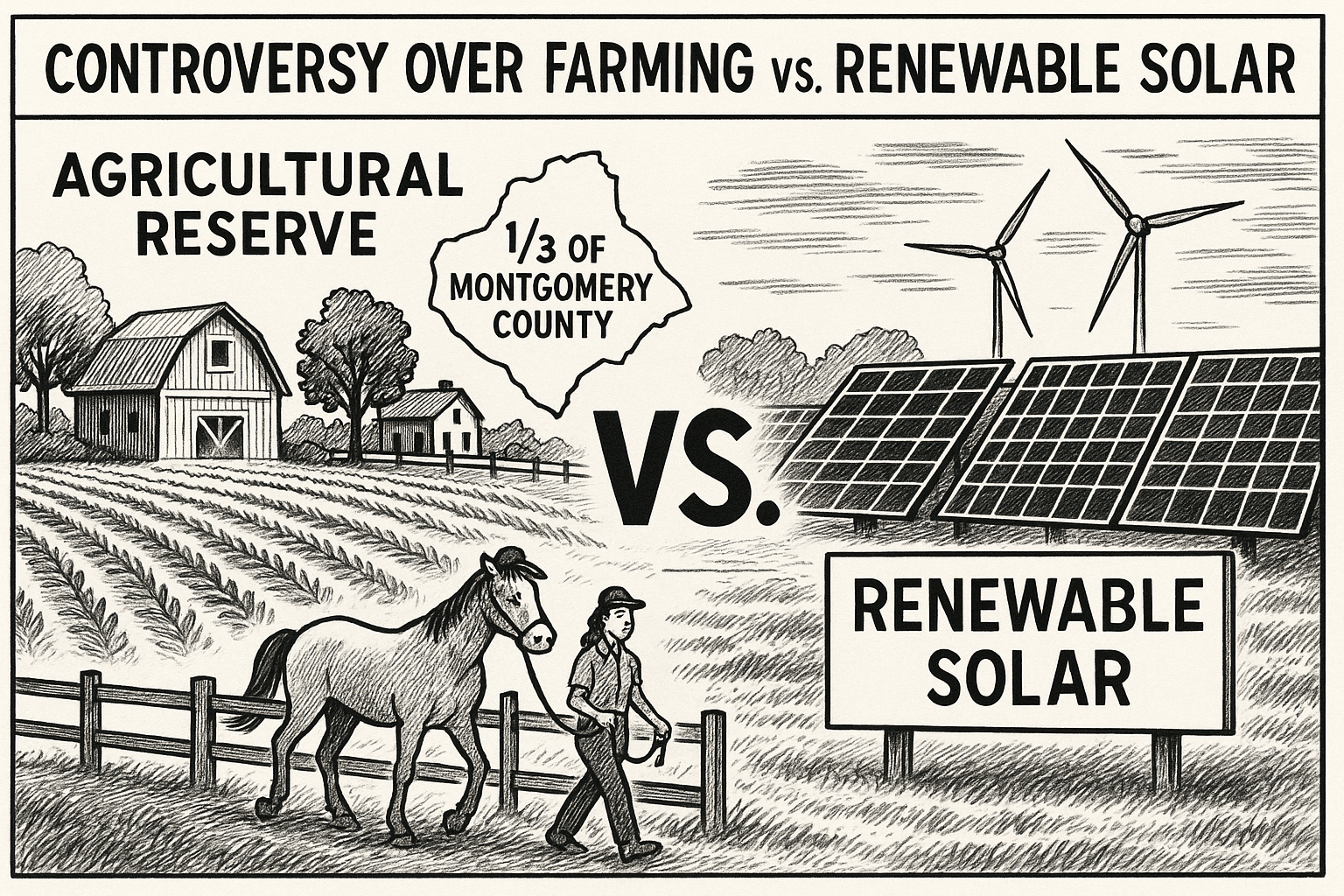What is the Montgomery County Maryland Agricultural Reserve and its incursions
An area that is 145 square miles (equivalent to square, 12 miles per side, 40% bigger than theoretical land area of Washington, DC) or 93,000 acres… approximately 93,000 football fields of land surface.
The Montgomery County Agricultural Reserve, often referred to simply as the Ag Reserve, is a nationally recognized land conservation area in Montgomery County, Maryland, encompassing 93,000 acres—about one-third of the county’s total land.
Overview
- Established: 1980 by the Montgomery County Council
- Size: ~93,000 acres (approximately 145 square miles)
- Purpose: To preserve farmland and open space, protect natural resources, and support the rural economy near a rapidly urbanizing region.
Key Features
- Zoning: The area uses a unique Rural Density Transfer (TDR) zoning system that limits development to 1 house per 25 acres and encourages transfer of development rights to denser urban areas.
- Protected Lands: Includes farmland, forests, wetlands, streams, and parts of the Potomac River watershed.
- Land Uses:
- Crop farming and livestock operations
- Orchards, vineyards, and equestrian centers
- Agri-tourism (wineries, farm stands, corn mazes)
- Environmental conservation
- Solar farming (controversially debated)
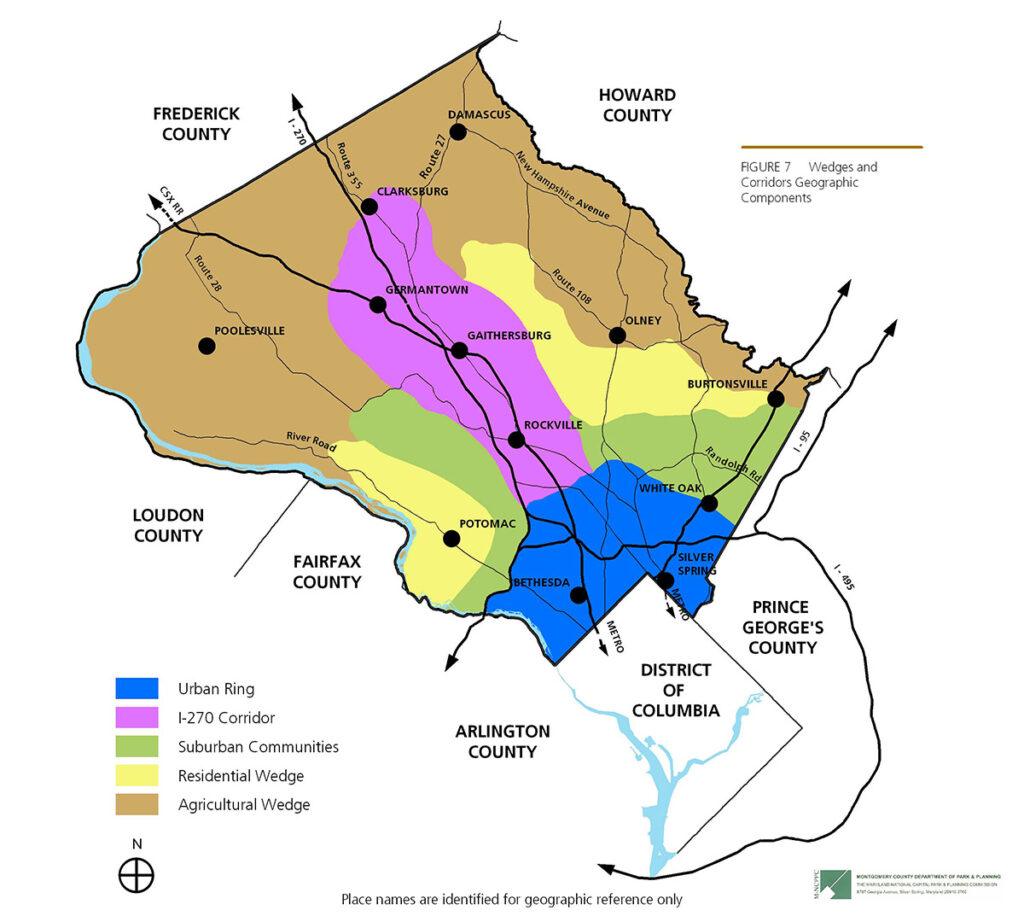
Importance
- Food Security: Keeps farming viable near the DC metro area.
- Environmental Benefits: Protects biodiversity, aquifers, and the Chesapeake Bay watershed.
- Climate Resilience: Acts as a carbon sink and flood buffer.
- Economic Value: Supports hundreds of farms and farm-related businesses.
Challenges
- Development Pressure: Ongoing tension between land conservation and real estate development interests.
- Solar Farm Controversy: Debates about allowing large-scale solar installations on farmland.
- Access & Equity: Rising land costs limit entry for new farmers, especially minority or low-income farmers.
Recognition
- Considered a model for land conservation planning in the U.S.
- Highlighted by the American Planning Association and others as a visionary rural preservation effort.
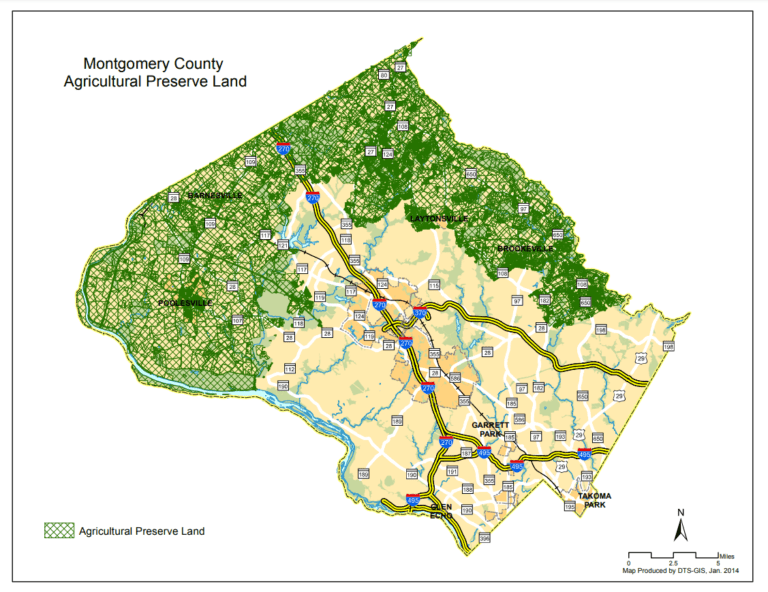
The proposed and increasingly legalized use of large-scale solar panel farms in Montgomery County’s Agricultural Reserve is a highly controversial issue. It represents a clash between two “green” goals: preserving farmland vs. producing renewable energy. Here’s a breakdown of how it affects the Ag Reserve:
Summary of Impact
| Category | Impact |
|---|---|
| Farmland Preservation | Negative — Solar arrays displace agricultural use and may permanently alter soil viability. |
| Land Use Policy | Disruptive — Undermines the original intent of the Ag Reserve as a farming and conservation zone. |
| Environmental Tradeoff | Mixed — Gains in carbon-free energy vs. loss of regenerative ag, wildlife habitat, and local food. |
| Economic Access | Biased — Landowners can profit more by leasing to solar firms than by farming, skewing the land market. |
| Precedent Setting | Dangerous — Opens the door for further non-agricultural encroachments in protected land. |
Policy Context
- 2020-2021: Montgomery County Council debated zoning amendments (ZTA 20-01, 20-01C, etc.) to allow community solar farms.
- 2023: Council passed an amended law permitting limited solar development on up to 200 acres in the Ag Reserve, with restrictions:
- No more than 2 MW per array
- Must maintain dual-use: i.e., allow for agriculture beneath or alongside the panels
- Require vegetation and soil protection plans
However, critics argue that the rules are weak and open the door to corporate land grabs that skirt the Reserve’s original purpose.
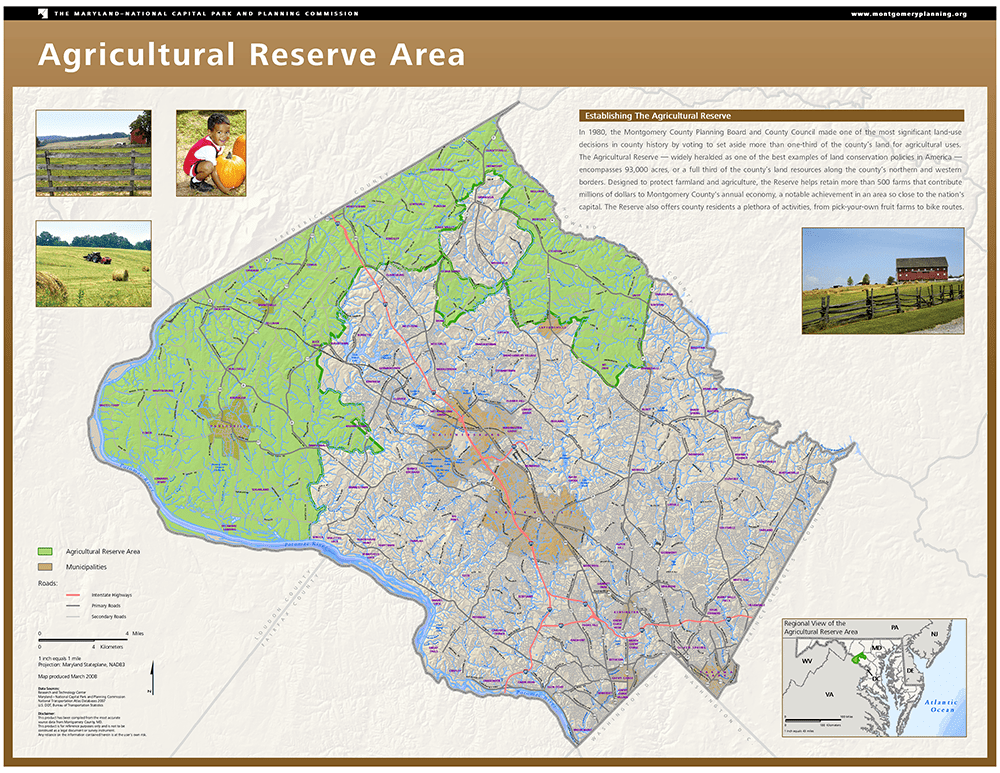
Farmer & Activist Reactions
- Against Solar in Ag Reserve:
- Montgomery Countryside Alliance and many farmers argue solar should be placed on rooftops, brownfields, and commercial lots, not prime farmland.
- Claim it’s a “Trojan Horse” for non-agricultural development.
- Express concern about permanent loss of rural landscape and food-growing land.
- In Favor:
- Some environmental groups and landowners support it as a way to combat climate change and generate passive income.
- Some see it as a way to keep farmland financially viable amid tough economics.
Strategic Questions Now
- Will this scale up beyond the 200-acre cap?
- Will dual-use mandates be enforced or evaded?
- Will the Reserve’s founding principle — food and farming first — be rewritten?
Bottom Line
Allowing solar farms in the Agricultural Reserve undermines the foundational goal of farmland protection and could pave the way for further non-farming uses, despite its renewable energy benefits. It pits climate priorities against food security and rural preservation, and may shift land value incentives away from agriculture toward energy speculation.
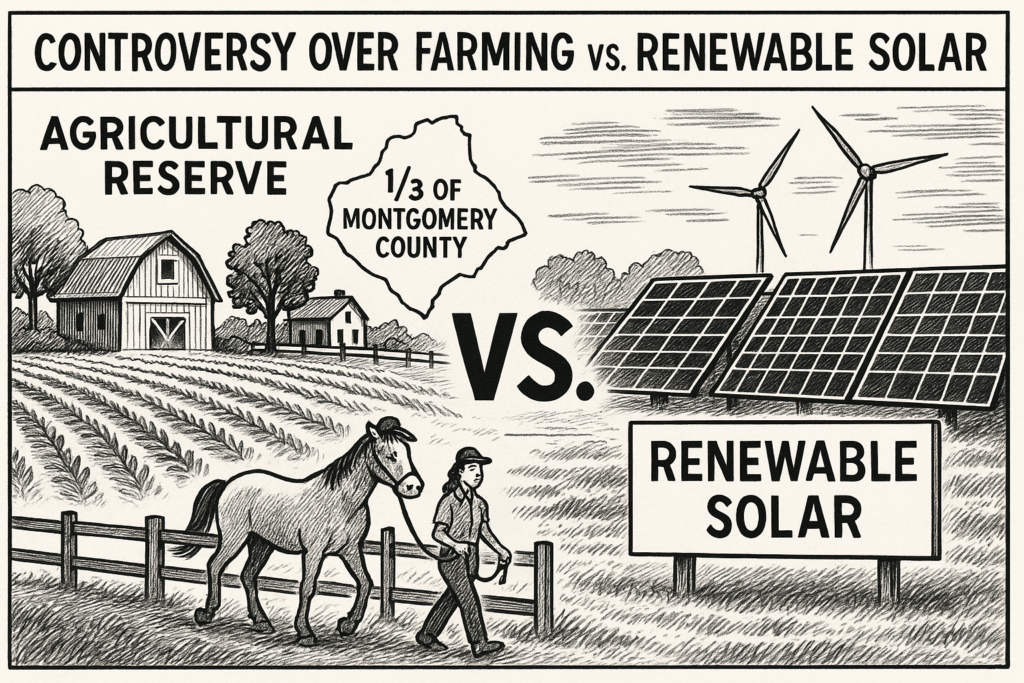
Here’s a deeper look at how the solar farm controversy is unfolding in the Agricultural Reserve:
Visual Context
- Maps depict the ~93,000-acre Ag Reserve zone covering one-third of Montgomery County, highlighting its boundaries and prime soils (planning.org).
Timeline of Key Events
| Year | Event |
|---|---|
| 1980 | Ag Reserve established — farmland protected with 1 home/25 acre zoning (en.wikipedia.org). |
| Feb 2021 | ZTA 20–01 passed: allows conditional-use solar in AR on non-prime soils (<2 MW) . |
| Feb 2021 | Public debate between CM Riemer (pro) and Exec Elrich (cautious) . |
| 2021–2023 | Groups argue cap should be 2%, not 5%; two small solar projects proposed (Dickerson, Poolesville) . |
| Dec 2023 | County Planning report: two approved solar sites, ~20 acres used, minimal ag impact noted . |
| Apr 2025 | Planning Board approves Chaberton Energy’s 11-acre project in Poolesville, despite staff objections . |
| 2024–2025 | Ongoing PSC cases (e.g. Sugarloaf, Ramire) challenge county zoning to allow solar on prime soils . |
Major Landowners & Developers Involved
- Chaberton Energy (Rockville): recently approved 11-acre array near Poolesville (bethesdamagazine.com).
- Chaberton Solar (Ramire, Dickerson): seeking PSC approval for ~11–16 acre projects on prime soils (sugarloafcitizens.org).
- Solar Investors: offering landowners $40K–$200K/year leases, vastly outbidding traditional ag rental rates (~$125/acre) (mocoalliance.org).
- Montgomery Countryside Alliance (MCA), Montgomery County Farm Bureau, Montgomery Agricultural Producers, SCA: opposing large arrays, advocating safeguard of prime soils (sugarloafcitizens.org).
The Core Tension
- Pro-Solar Arguments:
- Helps meet climate targets and reduce carbon emissions.
- Advocates claim “dual-use” agrivoltaics (e.g. pollinator plantings) can co-exist with farming (marylandmatters.org).
- Supporters push for broader allowances, citing modern technology and energy needs .
- Anti-Solar Arguments:
- Fear displacement of farms and escalation of land prices that lock out new and BIPOC farmers (dcist.com).
- Concern that solar on prime (Class I/II) soils contradicts the Reserve’s core mission (sugarloafcitizens.org).
- Local groups insist solar be limited to marginal lands, rooftops, and brownfields (sugarloafcitizens.org).
Summary
The debate hinges on whether solar in the Ag Reserve can be done responsibly, preserving both agriculture and land access equity, or whether it’s a threat that risks handing over fertile land to “energy speculation.” With PSC appeals under way, the future balance between farming and renewable energy in this iconic zone remains uncertain.
